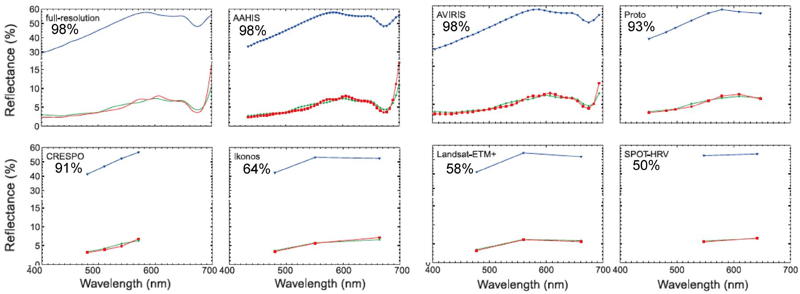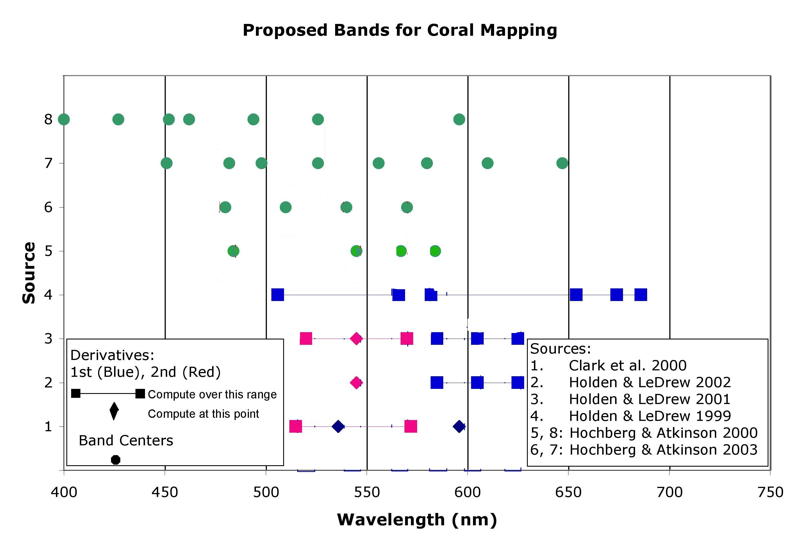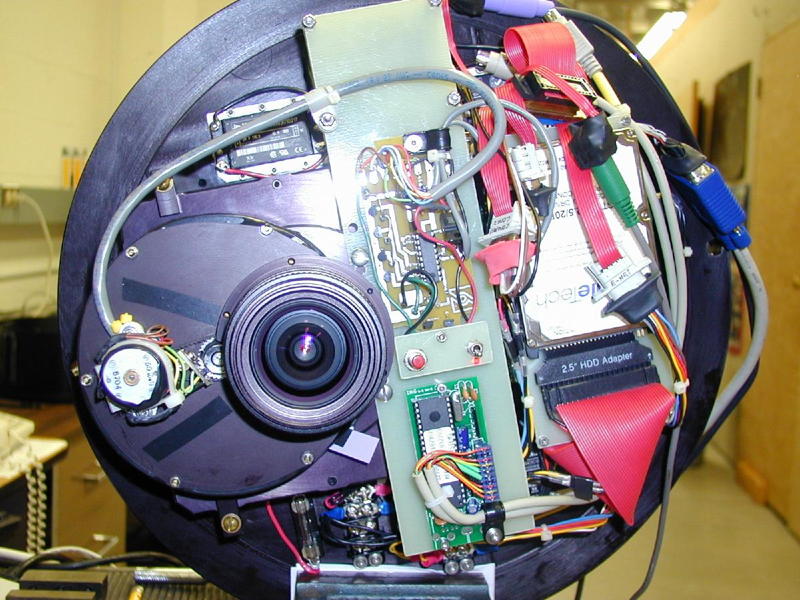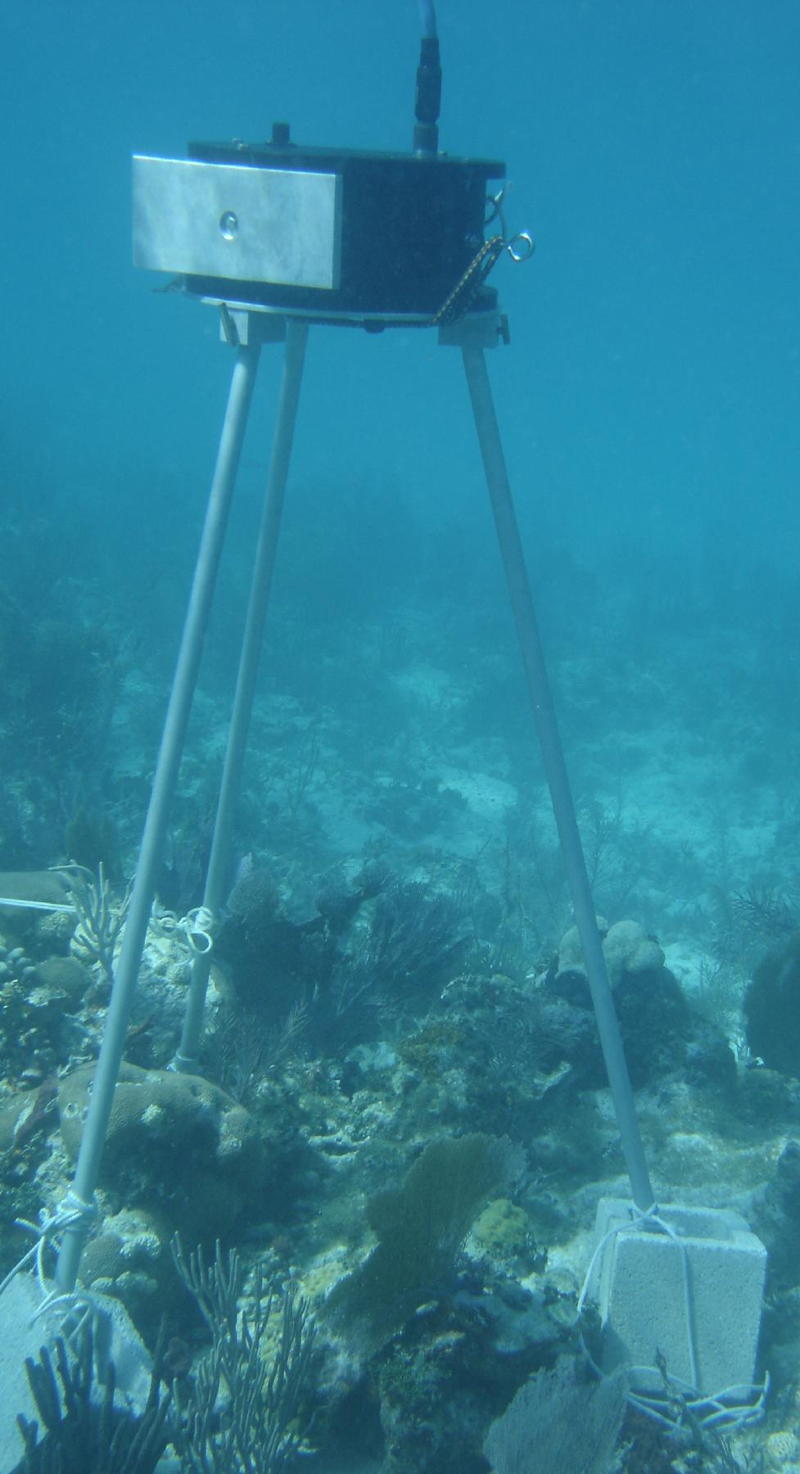MSCAM
In the early 2000s, several publications of hyperspectral reflectance of corals, algae, and sediment suggested that careful choice of narrow (~10 nm) spectral bands might improve benthic classification accuracy relative to the wide spectral bands available on satellite imagery of the era.
 Figure 1: Coral, algae, sediment average specta shown at different spectral resolutions.
Higher spectal resolution resutled in greater spectral discrimination, but careful
choice of narrow spectral bands was much better than the wide bands on satellites
of the era. (Modifed from Hochberg et al. 2003)
Figure 1: Coral, algae, sediment average specta shown at different spectral resolutions.
Higher spectal resolution resutled in greater spectral discrimination, but careful
choice of narrow spectral bands was much better than the wide bands on satellites
of the era. (Modifed from Hochberg et al. 2003)
We built an underwater multispectral camera to test this hypothesis: whether narrow spectral bands were actually superior to standard RGB cameras for automated classification of underwater images.
 Figure 2: Spectral bands suggested in the literature for increased accuracy of
coral reef mapping: Each row of points corresponds to the bands proposed by a
particular study. Solid points mark band centers, while squares and diamonds mark the
locations of derivatives. MSCAM was used with different combinations of these bands.
Figure 2: Spectral bands suggested in the literature for increased accuracy of
coral reef mapping: Each row of points corresponds to the bands proposed by a
particular study. Solid points mark band centers, while squares and diamonds mark the
locations of derivatives. MSCAM was used with different combinations of these bands.
The main take-home from this work was that very careful water column attenuation correction was needed to take full advantage of the high spectral resoltuion, at least with underwater imagery where distance to the bottom can vary substantially from pixel to pixel. On the other hand, combining high spectal resolution with image texture metrics produced a good classiciation algorithm for basic coral algae, sediment clases. This work was published at Oceans 2007 , where it won the student poster award.
MSCAM pictures


 ART GLEASON | Archive
ART GLEASON | Archive